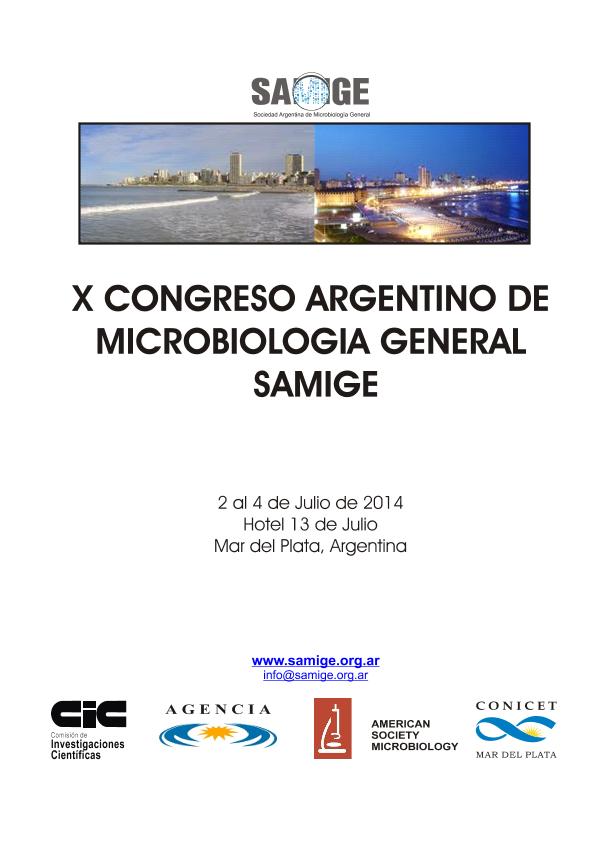Mostrar el registro sencillo del ítem
dc.contributor.author
Bertini, Elisa Violeta

dc.contributor.author
Leguina, Ana Carolina del Valle

dc.contributor.author
Nieto Peñalver, Carlos Gabriel

dc.date.available
2023-03-09T13:52:16Z
dc.date.issued
2014
dc.identifier.citation
Levaduras endofiticas de caña de azucar presentan actividad quorum quenching; X Congreso Argentino de Microbiología General; Mar del Plata; Argentina; 2014; 1-2
dc.identifier.uri
http://hdl.handle.net/11336/190046
dc.description.abstract
Quorum sensing (QS) are signaling mechanisms that govern morphological and physiological responses to changes in cell density. QS enables microorganisms to communicate via secreted signaling molecules called autoinducers. Many of these autoninducers bellong to a N-acyl homoserine lactones`s (AHLs) family. AHLs are synthesized by Gram negative bacterias and their structure consist of a carbon N-acyl side chain linked to a lactone ring. These molecules are pH-dependent so the lactone ring will be reversibly hydrolyzed. On the other hand, Quorum quenching (QQ) is a process which disrupts the QS by different ways such as enzymatic lysis of the signal molecules. QQ allows to control many physiological mechanisms from pathogen gram negative bacteria. In view of this, the aim of the present work was to isolate yeasts with QQ properties from Saccharum officinarum, a species of sugar cane. Samples from roots, stems and leaves were plated onto YM agar. Incubation was carried out at 30ºC. Colonies with different morphotypes were selected and plated. Pure colony was obtained by repeated streaking on YM agar. The genomic DNA of the yeast isolates were extracted to identify them. They were used as template for PCR. The 26S rDNA gene was PCR-amplified using the following primers namely NL1 and NL4. Nucleotide sequences were compared with GenBank databases using the BLASTN program followed by sequence alignment Yeasts were incubated onto YM supplemented with HSLs comercial standards (C6-HSL, 3-oxo-C6-HSL, C10-HSL, 3-oxo-C10-HSL, C12-HSL, 3-oxo-C12-HSL, C8-HSL and 3-oxo-C8-HSL) to demostrate the presence of QQ mechanisms. After 2 days incubation supernadants of cultures were taken and the detection of HSLs degradation was carry out using two biosensor strains, Chromobacterium violaceum CV026 and Chromobacterium violaceum Vir07. If necessary acidification for re-lactonisation using HCl was performed. 19 yeast strains were finally isolated. Sequencing of 26S rDNA indicated that 19 strains bellonged to three different genus (Pichia, Rhodotorula and Sporisorium). In the QQ assay, all yeasts tested were able to degradate at least one of the proven HSLs comercial standards. The isolates presented a marked tendecy to hidrolyse long-acyl-chain compounds. However, two Rhodotorula strains exhibited the most outstanding behavior, by degradating the 8 different QS molecules assayed. In order to demostrate lactonase activity, supernadants of cultures were adicionated with HCl. The following bioassays revealed that at low pH levels the lactone rings were closed again suggesting the presence of lactonase enzymes in Rhodotorula yeasts.
dc.format
application/pdf
dc.language.iso
eng
dc.publisher
Sociedad Argentina de Microbiología General
dc.rights
info:eu-repo/semantics/openAccess
dc.rights.uri
https://creativecommons.org/licenses/by-nc-sa/2.5/ar/
dc.subject
YEAST
dc.subject
QUORUM QUENCHING
dc.subject
ENDOPHYTIC
dc.subject
SUGARCANE
dc.subject.classification
Biología Celular, Microbiología

dc.subject.classification
Ciencias Biológicas

dc.subject.classification
CIENCIAS NATURALES Y EXACTAS

dc.title
Levaduras endofiticas de caña de azucar presentan actividad quorum quenching
dc.title
Endophytic yeast from sugarcane exhibit quorum quenching activity
dc.type
info:eu-repo/semantics/publishedVersion
dc.type
info:eu-repo/semantics/conferenceObject
dc.type
info:ar-repo/semantics/documento de conferencia
dc.date.updated
2023-03-02T15:35:59Z
dc.journal.pagination
1-2
dc.journal.pais
Argentina

dc.journal.ciudad
Mar del Plata
dc.description.fil
Fil: Bertini, Elisa Violeta. Consejo Nacional de Investigaciones Científicas y Técnicas. Centro Científico Tecnológico Conicet - Tucumán. Planta Piloto de Procesos Industriales Microbiológicos; Argentina
dc.description.fil
Fil: Leguina, Ana Carolina del Valle. Consejo Nacional de Investigaciones Científicas y Técnicas. Centro Científico Tecnológico Conicet - Tucumán. Planta Piloto de Procesos Industriales Microbiológicos; Argentina
dc.description.fil
Fil: Nieto Peñalver, Carlos Gabriel. Consejo Nacional de Investigaciones Científicas y Técnicas. Centro Científico Tecnológico Conicet - Tucumán. Planta Piloto de Procesos Industriales Microbiológicos; Argentina
dc.relation.alternativeid
info:eu-repo/semantics/altIdentifier/url/https://samige.org.ar/wp-content/uploads/2022/10/LIBRO-SAMIGE-2014.pdf
dc.conicet.rol
Autor

dc.conicet.rol
Autor

dc.conicet.rol
Autor

dc.coverage
Internacional
dc.type.subtype
Congreso
dc.description.nombreEvento
X Congreso Argentino de Microbiología General
dc.date.evento
2014-07-02
dc.description.ciudadEvento
Mar del Plata
dc.description.paisEvento
Argentina

dc.type.publicacion
Book
dc.description.institucionOrganizadora
Sociedad Argentina de Microbiología General
dc.source.libro
Libro de Resúmenes: X Congreso Argentino de Microbiología General
dc.date.eventoHasta
2014-07-04
dc.type
Congreso
Archivos asociados
